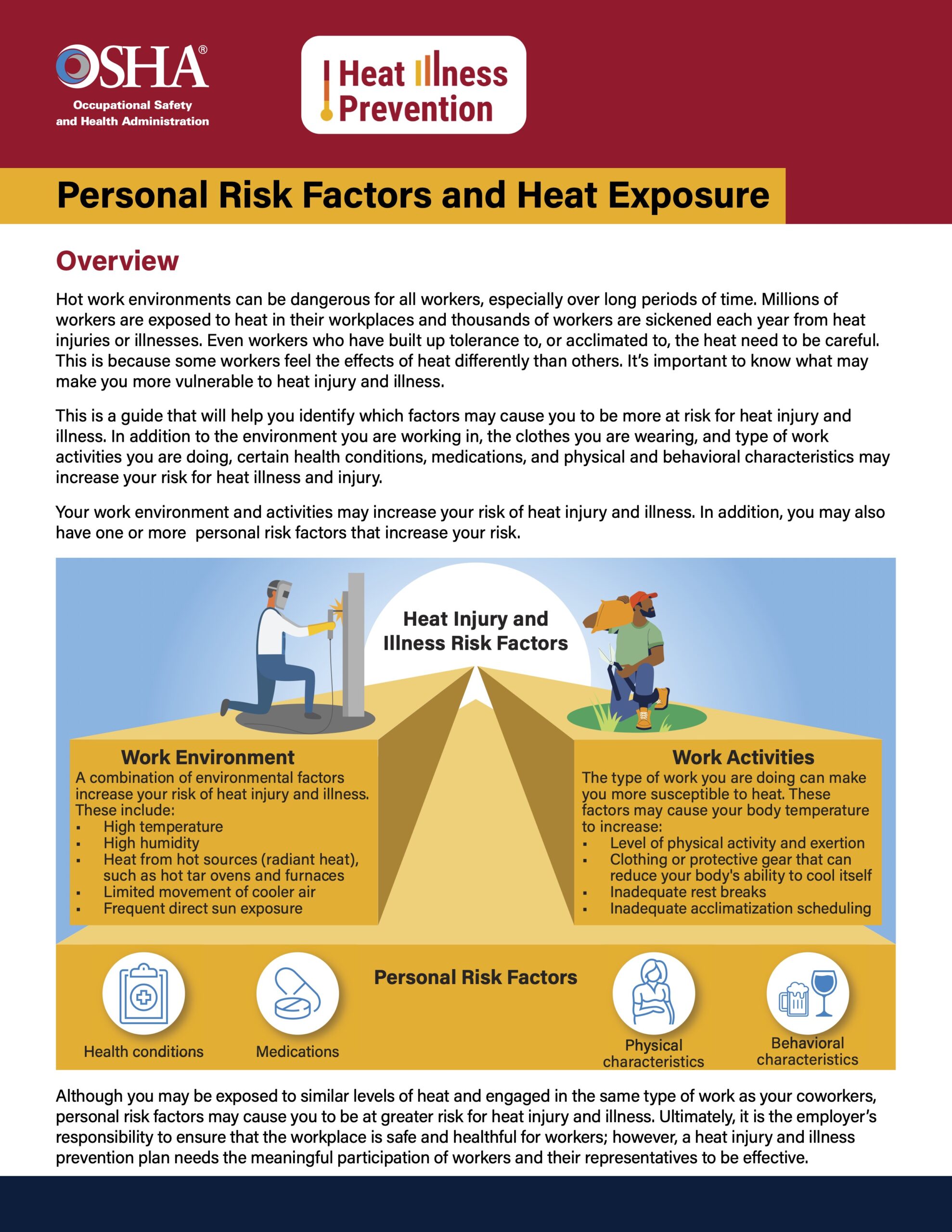Personal Risk Factors and Heat Exposure – U.S
Organization: Occupational Safety and Health Administration (OSHA)
Year: 2023

Heat-related illnesses pose serious risks, especially for individuals with pre-existing conditions, certain medications, dehydration, or lack of heat acclimatization. OSHA highlights key risk factors, including age, obesity, cardiovascular diseases, and high humidity exposure. Preventative measures include staying hydrated, taking frequent breaks, wearing lightweight clothing, and adjusting work schedules to avoid peak heat. Recognizing early symptoms like dizziness, weakness, and confusion can prevent severe outcomes. Employers should implement heat safety protocols to protect workers. Proper education, hydration, and acclimatization are essential to reducing the dangers of extreme heat exposure in workplaces and outdoor environments.
This guide identifies which factors may cause someone to be more at risk for heat injury and illness, such as the environment they work in, the clothes they wear, the type of work activities they participate in, their health conditions and medications, and various physical and behavioral characteristics.